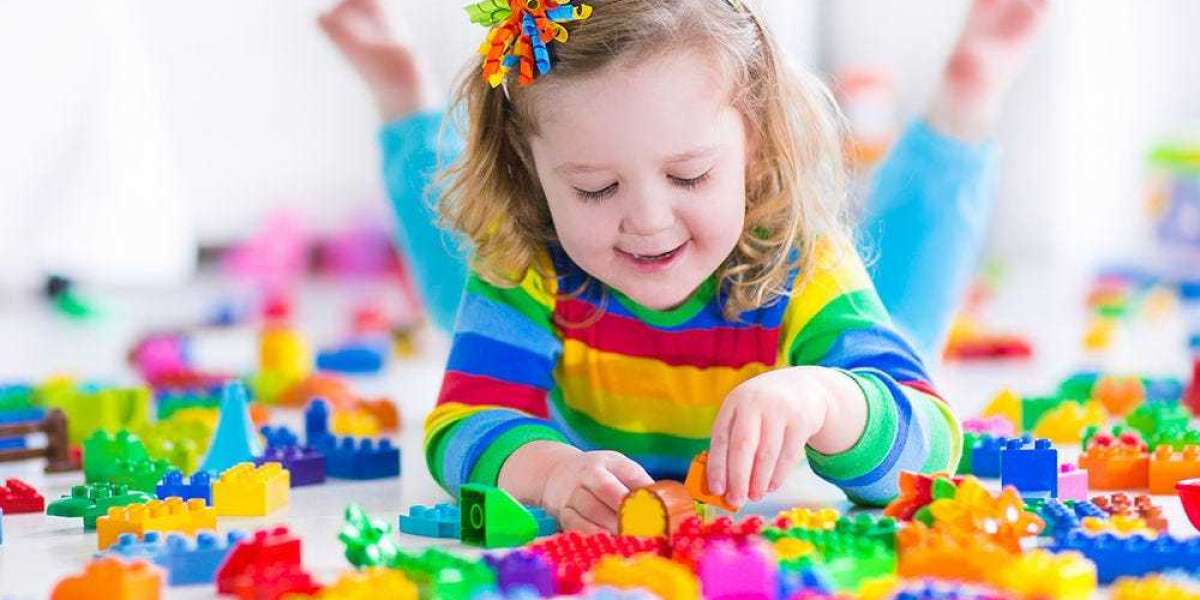Choosing the perfect toy for your child can be both exciting and overwhelming. With countless options available, it's important to select toys that are not only fun but also beneficial for your child's development. In this blog post, we'll explore key factors to consider when buying toys for kids, from age appropriateness and safety to educational value and durability. By understanding these factors, you can make informed decisions and choose toys that will spark your child's imagination, encourage learning, and provide hours of enjoyment.
Age Appropriateness
Choosing toys that correspond with your child's growth stage is essential. A toddler might be fascinated by simple, brightly colored toys that encourage sensory exploration, while a preschooler might prefer more complex puzzles or building blocks that challenge their problem-solving skills. Always ensure that the toy meets safety standards and is appropriate for your child's age to avoid potential hazards. For instance, a toy designed for a toddler might have small parts that could pose a choking risk for a younger child.
Safety First
When selecting toys, safety should come first. Avoid toys with small parts that could pose a choking risk, especially for young children. Additionally, check for sharp edges or points that could cause injury. Opt for toys that are free from harmful substances like lead and phthalates. Loud toys can be irritating and harmful to hearing, so choose toys with moderate noise levels. Consider the durability of the toy, especially for active children. A sturdy toy can withstand rough play and last longer, providing better value for your money.
Educational Value
Toys can be effective educational and developmental resources. Look for toys that stimulate cognitive development, such as puzzles, building blocks, and educational games. These toys can help children develop problem-solving skills, critical thinking, and creativity. For example, puzzles can improve spatial reasoning and logical thinking, while building blocks can enhance fine motor skills and creativity. Toys that encourage physical activity, like balls, ride-on toys, and outdoor playsets, can help develop gross motor skills, coordination, and balance. Engaging in physical play can also improve cardiovascular health and reduce the risk of childhood obesity. Role-playing toys, dolls, and board games can help children develop social skills, empathy, and emotional intelligence. Through imaginative play, children can learn to cooperate, share, and resolve conflicts. Art supplies, playdough, and construction sets can spark creativity and imagination, fostering self-expression and artistic abilities.
Durability
Invest in toys that are well-made and durable, especially for active children who tend to play rough. Opt for toys that are easy to clean, as they will likely get dirty with frequent use. Durable toys can withstand the test of time, providing long-lasting enjoyment and value. Additionally, durable toys are often made from high-quality materials that are less likely to break or wear out, reducing the need for frequent replacements.
Personal Preferences
Consider your child's interests and hobbies. If they love animals, a stuffed animal or a toy zoo might spark their imagination and curiosity. Think about your child's sensory preferences. Some children might prefer toys with bright colors and sounds, while others might prefer tactile experiences like soft plush toys. By considering your child's unique preferences, you can choose toys that resonate with them on a personal level and provide hours of enjoyment.
Budget
Determine how much you're willing to spend on toys and look for toys that offer good value for money, considering factors like durability, educational value, and playability. You don't need to break the bank to find quality toys. Many affordable toys can provide hours of fun and learning. But it's crucial to strike a balance between price and quality. Investing in a few high-quality toys that will last longer can be more cost-effective in the long run than buying numerous cheap toys that break easily.
Environmental Impact
Select toys constructed from eco-friendly materials like recycled plastic or wood. Avoid toys with excessive packaging to reduce waste. By making eco-friendly choices, you can teach your child about environmental responsibility and contribute to a more sustainable future. Additionally, consider buying toys from companies that prioritize ethical and sustainable practices.
Gender Neutrality
Encourage diverse play by avoiding gender stereotypes and choosing toys that can be enjoyed by both boys and girls. By breaking down gender barriers, you can empower children to explore their interests and passions without limitations. For example, a toy construction set can be enjoyed by both boys and girls, encouraging creativity and problem-solving skills.
Secondhand Toys
If you're on a budget or want to reduce waste, consider buying secondhand toys. However, ensure that secondhand toys are thoroughly cleaned and sanitized before giving them to your child. Secondhand toys can be a great way to save money and reduce your environmental impact. Additionally, buying secondhand toys promotes a circular economy and reduces waste.
The Gift of Time
Keep in mind that the simplest toys are frequently the finest. Spend quality time playing with your child, engaging in imaginative play, and reading books together. These shared experiences are invaluable and can foster strong bonds between parent and child. Moreover, spending quality time with your child can help them develop social skills, emotional intelligence, and a love of learning.
Conclusion
By carefully considering the factors discussed in this blog, you can select toys that are not only fun but also contribute to your child's overall development. Just as heaters provide warmth and comfort, the right toys can offer your child the nurturing environment they need to thrive. Remember, the goal is to choose toys that inspire creativity, encourage learning, and promote social and emotional skills. By making informed choices, you can provide your child with opportunities for growth and development through play.
Ultimately, the most valuable gift you can give your child is your time and attention. Spend quality time playing with your child, reading books, and engaging in imaginative play. These common experiences will cement your relationship and produce enduring memories.











